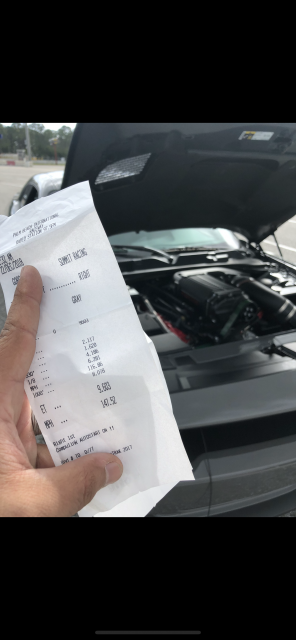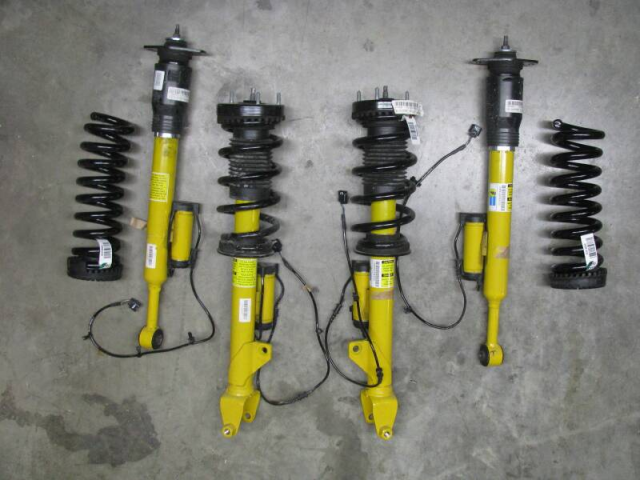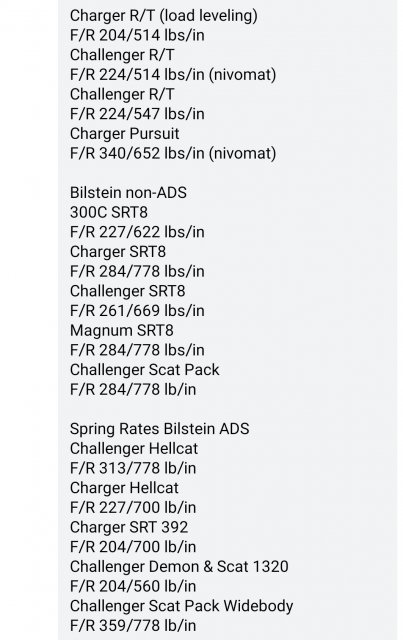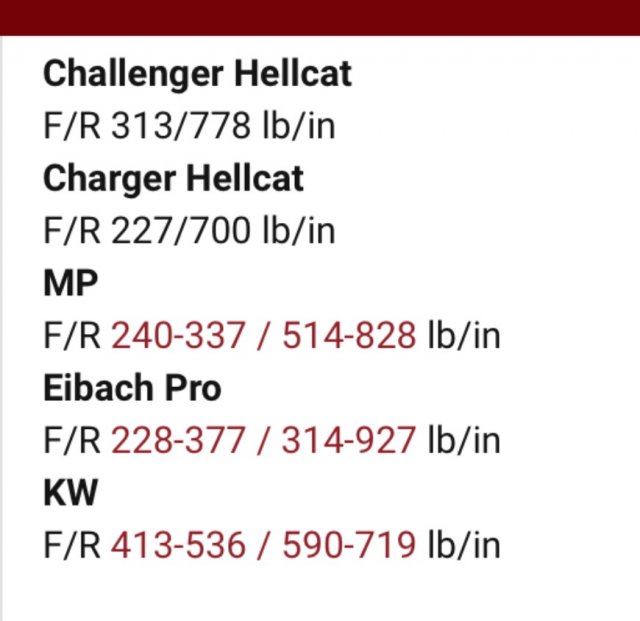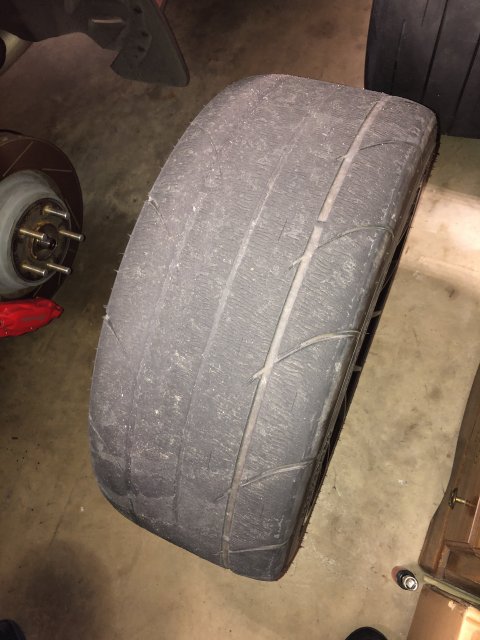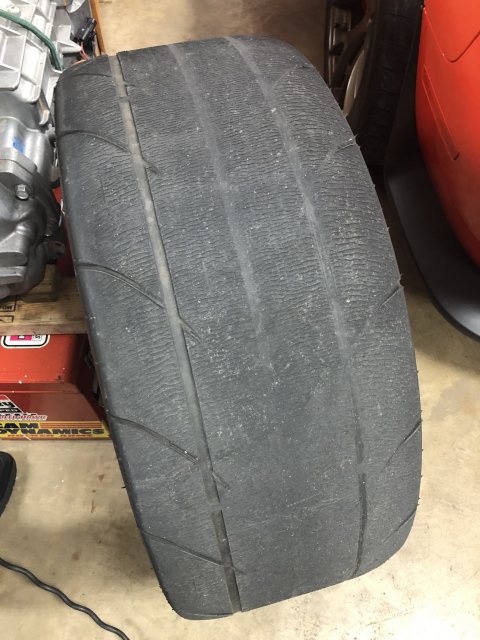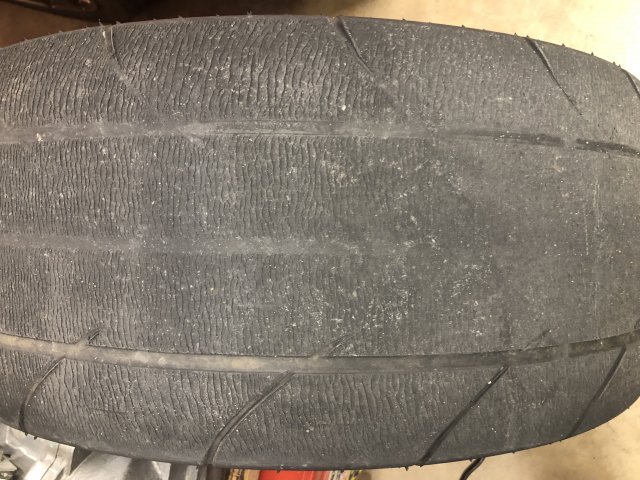- Member ID
- #1061
- Messages
- 1,487
- Reactions
- 2,487
- Likes
- 162
- City
- Ottawa
- State
- Non-US
- Country
- Canada
- Vehicle
- 2019 Challenger HC Widebody
Not that this subject is news or anything. I've been thinking about this issue a lot lately (and I already touched on it in another thread: https://www.hellcatforum.org/thread...sier-28x10-5-17dbr-comparison.5060/post-62175), especially since I put the "drag pack" on my car and got an opportunity to take a close look at the suspension. The recurring theme is either: my car hooks up well all the time or my car hooks up some of the time and then traction goes away. It seems that 99% of the time people look at their tires as the direct cause of the loss of traction, and don't bother to look at the root cause. So to quote myself:
Has anyone here tuned the instant centre and anti-squat in an IRS car? 4 links, ladder bars, hell even leaf springs, sure. All day (the Drag Pack cars come with solid axles for a reason). But, the factory HC IRS? Nope. I bet most folks wouldn't even begin to know where to start, much less how to alter it. So, we ultimately attempt to mask the inherent traction built issues into the factory HC suspension with the biggest tires possible, inducing weight transfer, and locking out the suspension (as camber gain is not ideal). This covers it pretty good: https://www.svtperformance.com/threads/drag-racing-irs-in-here-need-tips.1070658/#post-15155552
Beyond changing tires, the a few factors that are well within the average person's control are altering spring stiffness, controlling movement at the differential, and setting the suspension angles (camber and toe). The latter is achievable with either aftermarket arms and/or a camber correction kit from MOPAR, and an alignment machine. The general rule of thumb is that you want 0* of camber at the hit (when the car squats or rises) to ensure the best contact patch, the Demon is a bit higher in the back for just this reason. And 0 toe for the most efficient use of the tires/power/etc and better control. Controlling the pinion angle, this either done by minimizing movement the pinion side (a snubber) or the ring side of the housing – a differential brace. Typically most folks use a diff brace, but the cradle lockouts help in reducing deflection too. Now spring stiffness (and associated shock characteristics) are an interesting one. Yes, you can swap in "Demon" springs and potentially swap the BCM over to have "drag mode" but that is hardly practical for most people who are 95% street. So what to do? Well that's where it gets interesting. As mentioned above you can either lock the suspension travel out and hit the tires or soften it up and let the car squat in an attempt to transfer the weight. As we have seen so often, especially during burnouts these cars bob up and down in a most nauseating fashion - it looks stupid and it isn't efficient having the suspension harmonically load and unload.
To visualize the porpoising (example only, not a criticism):
Schools of thought: https://www.yellowbullet.com/threads/irs-setup.615945/post-12822806 & https://www.yellowbullet.com/threads/irs-setup.615945/post-12825152
However, “an IRS with significant anti-squat generally has bad roll (bump) steer characteristics” (https://grassrootsmotorsports.com/articles/suspension-mythbusting-solid-axle-vs-irs/), making this an impractical solution especially considering it would require re-engineering the car and ruining it for the street.
So if you take it back to basics, you should be asking yourself why this is occurring. This thread explains it beautifully with some baseline engineering considerations: https://www.eng-tips.com/viewthread.cfm?qid=286119 What is really good is Dodge applied the different length/diameter half-shafts to the LX/LA platforms to address the frequency issue, and if you are fortunate enough to have a Demon or a Widebody your car came with further upgraded half-shafts. To expand on the concept more these threads offer some possible mitigation strategies: https://www.ls1gto.com/threads/soft-or-stiff-rear-springs.784073/post-19633161 & https://www.ls1gto.com/threads/gforce-coil-over-set-up.424437/post-8043948
So what?
I believe there are a few simple non-permanent things we can do to quickly stiffen up the rear suspension.
From a home brew mindset we can pretty easily install coil spring boosters (https://www.amazon.ca/dp/B000AMBOFS?tag=duc12-20&linkCode=osi&th=1&psc=1) to raise the rearend of the car (which most HCs have about 1-1.5* of negative camber off the assembly line) to better square up the tires/suspension and increase the spring rate by isolating a coil or two). There are calculators available to determine the estimated effects. Another option is to install air bags/drag bags/a football into the springs and tune the rate with pressurized air. From what I’ve the factory springs are very narrow internally and may not facilitate this option. The outlier here are the shock settings.
It is commonly seen and anecdotally accepted as though “Street” is the preferred suspension setting as it allegedly promotes the most weight transfer. While it is highly likely it does soften the front up to encourage weight transfer, it will likely do the exact same in the rear where it may be more desirable to slow the compression rate. It is the old 90/10 front and 50/50 rear shock concept. The inability to tune compression and rebound independently front to rear is problematic.
Here is an interesting engineered Band-Aid that could assist in augmenting the shocks and dampen the unwanted movements: http://www.hopnot.net/InstallationI...tallationInstructions/tabid/2244/Default.aspx & http://www.hopnot.net/LinkClick.aspx?fileticket=D6JmvRWQhO4=&tabid=201
To sum up, there is lot more trial and error waiting to be undertaken to overcome the inherent limitations in the stock suspension. Of course you can start swapping in loads of parts in hopes of influencing this issue and never addressing the root cause – and that’s the owner’s prerogative. For me, I just want to find a simple reversible solution for that 5% of the time I am at the drag strip – so that I can enjoy the car 100% of the time.
Of course for the hardcore among us (but, not so hardcore as to cut up their car and fix the issue with a 4-link or the like) there is always the ability to invent a $12,000 "solution": https://shop.watsonracing.com/S550-MUSTANG-9-INCH-LIGHTWEIGHT-IRS-2015-2019-p/wr-15-rearsubfrm.htm
Has anyone here tuned the instant centre and anti-squat in an IRS car? 4 links, ladder bars, hell even leaf springs, sure. All day (the Drag Pack cars come with solid axles for a reason). But, the factory HC IRS? Nope. I bet most folks wouldn't even begin to know where to start, much less how to alter it. So, we ultimately attempt to mask the inherent traction built issues into the factory HC suspension with the biggest tires possible, inducing weight transfer, and locking out the suspension (as camber gain is not ideal). This covers it pretty good: https://www.svtperformance.com/threads/drag-racing-irs-in-here-need-tips.1070658/#post-15155552
Beyond changing tires, the a few factors that are well within the average person's control are altering spring stiffness, controlling movement at the differential, and setting the suspension angles (camber and toe). The latter is achievable with either aftermarket arms and/or a camber correction kit from MOPAR, and an alignment machine. The general rule of thumb is that you want 0* of camber at the hit (when the car squats or rises) to ensure the best contact patch, the Demon is a bit higher in the back for just this reason. And 0 toe for the most efficient use of the tires/power/etc and better control. Controlling the pinion angle, this either done by minimizing movement the pinion side (a snubber) or the ring side of the housing – a differential brace. Typically most folks use a diff brace, but the cradle lockouts help in reducing deflection too. Now spring stiffness (and associated shock characteristics) are an interesting one. Yes, you can swap in "Demon" springs and potentially swap the BCM over to have "drag mode" but that is hardly practical for most people who are 95% street. So what to do? Well that's where it gets interesting. As mentioned above you can either lock the suspension travel out and hit the tires or soften it up and let the car squat in an attempt to transfer the weight. As we have seen so often, especially during burnouts these cars bob up and down in a most nauseating fashion - it looks stupid and it isn't efficient having the suspension harmonically load and unload.
To visualize the porpoising (example only, not a criticism):
Schools of thought: https://www.yellowbullet.com/threads/irs-setup.615945/post-12822806 & https://www.yellowbullet.com/threads/irs-setup.615945/post-12825152
However, “an IRS with significant anti-squat generally has bad roll (bump) steer characteristics” (https://grassrootsmotorsports.com/articles/suspension-mythbusting-solid-axle-vs-irs/), making this an impractical solution especially considering it would require re-engineering the car and ruining it for the street.
So if you take it back to basics, you should be asking yourself why this is occurring. This thread explains it beautifully with some baseline engineering considerations: https://www.eng-tips.com/viewthread.cfm?qid=286119 What is really good is Dodge applied the different length/diameter half-shafts to the LX/LA platforms to address the frequency issue, and if you are fortunate enough to have a Demon or a Widebody your car came with further upgraded half-shafts. To expand on the concept more these threads offer some possible mitigation strategies: https://www.ls1gto.com/threads/soft-or-stiff-rear-springs.784073/post-19633161 & https://www.ls1gto.com/threads/gforce-coil-over-set-up.424437/post-8043948
So what?
I believe there are a few simple non-permanent things we can do to quickly stiffen up the rear suspension.
From a home brew mindset we can pretty easily install coil spring boosters (https://www.amazon.ca/dp/B000AMBOFS?tag=duc12-20&linkCode=osi&th=1&psc=1) to raise the rearend of the car (which most HCs have about 1-1.5* of negative camber off the assembly line) to better square up the tires/suspension and increase the spring rate by isolating a coil or two). There are calculators available to determine the estimated effects. Another option is to install air bags/drag bags/a football into the springs and tune the rate with pressurized air. From what I’ve the factory springs are very narrow internally and may not facilitate this option. The outlier here are the shock settings.
It is commonly seen and anecdotally accepted as though “Street” is the preferred suspension setting as it allegedly promotes the most weight transfer. While it is highly likely it does soften the front up to encourage weight transfer, it will likely do the exact same in the rear where it may be more desirable to slow the compression rate. It is the old 90/10 front and 50/50 rear shock concept. The inability to tune compression and rebound independently front to rear is problematic.
Here is an interesting engineered Band-Aid that could assist in augmenting the shocks and dampen the unwanted movements: http://www.hopnot.net/InstallationI...tallationInstructions/tabid/2244/Default.aspx & http://www.hopnot.net/LinkClick.aspx?fileticket=D6JmvRWQhO4=&tabid=201
To sum up, there is lot more trial and error waiting to be undertaken to overcome the inherent limitations in the stock suspension. Of course you can start swapping in loads of parts in hopes of influencing this issue and never addressing the root cause – and that’s the owner’s prerogative. For me, I just want to find a simple reversible solution for that 5% of the time I am at the drag strip – so that I can enjoy the car 100% of the time.
Of course for the hardcore among us (but, not so hardcore as to cut up their car and fix the issue with a 4-link or the like) there is always the ability to invent a $12,000 "solution": https://shop.watsonracing.com/S550-MUSTANG-9-INCH-LIGHTWEIGHT-IRS-2015-2019-p/wr-15-rearsubfrm.htm
Last edited:
-
1
- Show All

